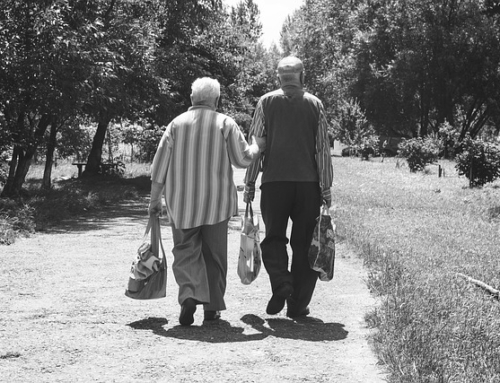By Eddie Pipkin
Following the shootings in Parkland, Florida, I found myself struggling to understand the ways in which local congregations can meaningfully respond to such tragedies. Certainly, churches have continued to fill their historic role of providing a place of  comfort and hope and a place where people can grieve together. As these kinds of horrific incidents have become more common, churches have even moved beyond those roles to serving as a community resource for counseling, as detailed in this Christianity Today article. Some churches, in a nod to their heritage as activists for social justice issues, are giving their members the encouragement and tools to pressure government leaders to do something, anything, to help stem the carnage.
comfort and hope and a place where people can grieve together. As these kinds of horrific incidents have become more common, churches have even moved beyond those roles to serving as a community resource for counseling, as detailed in this Christianity Today article. Some churches, in a nod to their heritage as activists for social justice issues, are giving their members the encouragement and tools to pressure government leaders to do something, anything, to help stem the carnage.
Prayer is always healing and helpful, while policy changes are generally beyond the purview of locacl churches (although faith communities can and should encourage their members to be thoughtful, well-informed, and active citizens). But in terms of preventing the next school shooting tragedy, we definitely have one very powerful tool at our disposal, and every single congregation should be pausing to look more closely at whether they are living out the gospel call to do this one important thing that we are uniquely equipped to do.
We can help provide connections for the lonely, the disaffected, and the disillusioned.
Each day in the week following the Parkland shooting, I took the time to read the biographies of the 17 people who died. Their accomplishments were recounted by proud family and friends. Their passions and personalities, the things they loved, and the things that made them lovable brought them to life for those of us privileged to know them only in the sad aftermath of this tragedy. Each of them were connected to people and communities who loved them fiercely.
Not so the young man who selfishly and horrifically took their lives.
He was broken in numerous and depressing ways. I don’t write those words to make an excuse for the depraved and evil choice he made to deal with his own disaffection by robbing others of their lives. I write them to remind us that every local faith community has the opportunity to welcome broken souls and give them a chance to find a better path forward, a path rooted in God’s grace and a fellowship of hope and encouragement, rather than a dead end of despair and violence.
Churches are doing this work every day, providing places of connection and loving, accountable relationships for the socially awkward, the bullied, the marginalized, and those derailed by mistreatment and tragedy. This is heroic, difficult work, and there is no ledger (at least in this world) for lives that have been saved by the outreach and inclusiveness of Christian communities as they have helped men and women discover the grace of God and turn from violence, addiction, and self-destruction.
It is a good idea for us, as ministry leaders, to take stock of our purposeful extension of that grace to people on the edge of our communities. It is the easiest thing in the world for us to fall into familiar fellowship with those whom we value as brothers and sisters—particularly those who are fun and easy to have around—and become an isolated “in group,” hard to penetrate for newbies, particularly awkward newbies. This is true for all the sub-communities in our churches (seniors, long-running Sunday School classes, children’s choirs), but in the context of the Parkland tragedy, I was reminded of how acutely true it is of youth groups. Particularly awkward and difficult young men in our youth groups.
I have personally been involved with two such young men in the past couple of years, young men who as elementary school students were connected to my local church family as part of the various children’s programs (including a pre-youth program we offered exclusively to help bridge fourth and fifth graders), but who struggled to make the critical transition to youth ministry. They both possess laudable qualities and interesting personalities, but they both are both socially ungainly and different from their peers in ways that make it hard for them to fit in.
Many boys struggle in this way. Comedian Michael Ian Black writes, heartbreakingly, in a recent New York Times op-ed, about the difficulties of boys in expressing their feelings in health ways:
Too many boys are trapped in the same suffocating, outdated model of masculinity, where manhood is measured in strength, where there is no way to be vulnerable without being emasculated, where manliness is about having power over others. They are trapped, and they don’t even have the language to talk about how they feel about being trapped, because the language that exists to discuss the full range of human emotion is still viewed as sensitive and feminine.
Youth groups and church families (in the spirit of “it takes a village”) can provide a safe and healthy place for exploring feelings. They can provide mentors. They can provide friends and accountability partners. But this doesn’t happen by accident, because even in the church, it’s not natural. Youth groups have always featured popular kids and “in groups,” and to the extent that they move beyond the world’s model for being a collection of cool kids who fit in, this happens because leaders make it a point for it to happen—such leaders embrace the gospel vision of what community should be and take steps to make that vision a reality.
I encourage you to read this link to an article by Glennon Doyle Melton, in which he discovers a habit practiced by his son, Chase’s, fifth grade teacher. At the end of every Friday, she has her students write anonymously on a slip of paper the names of four students they would like to sit with the following week (requests which the students know may or may not be granted), as well as one classroom citizen they would like to celebrate. She uses these results to identify the students who are lonely and left out and does all she can to integrate them into the community. Melton writes:
As Chase’s teacher explained this simple, ingenious idea, I stared at her with my mouth hanging open. “How long have you been using this system?” I said.
Ever since Columbine, she said. Every single Friday afternoon since Columbine.
Good Lord. This brilliant woman watched Columbine knowing that all violence begins with disconnection. All outward violence begins as inner loneliness. Who are our next mass shooters and how do we stop them? She watched that tragedy knowing that children who aren’t being noticed may eventually resort to being noticed by any means necessary.
And so she decided to start fighting violence early and often in the world within her reach. What Chase’s teacher is doing when she sits in her empty classroom studying those lists written with shaky 11-year-old hands is saving lives. I am convinced of it.
And what this mathematician has learned while using this system is something she really already knew: that everything—even love, even belonging—has a pattern to it. She finds the patterns, and through those lists she breaks the codes of disconnection. Then she gets lonely kids the help they need.
This intentional discipline of love—because that is what it is: love—by one person in one classroom has no doubt changed lives. We have multiple opportunities to be intentional in this way, because our purpose, our reason for being as an institution, is not to teach skills like math or history—our whole point is to build the community of grace, acceptance, abundant life that Jesus modeled.
I fully acknowledge that this is not easy. Disaffected people can be difficult, unmanageable, and unpleasant. Working with them requires good training, great leaders, lots of time, patience, and prayer. But it is work that is worth it. We will not be able to connect everybody in every instance. Some people will choose to distance themselves from us despite all our efforts and prayers. But too often we give up too easily because of the challenges.
My plea, today, with the grief of Parkland still fresh in mind, is that we would all take the time to make a list of two or three people we know who are on the fringes of our ministry communities, and that we would renew our commitment to bring them into the fold. My hope is that we make it a point that we remind the plugged-in members of “the world within our reach” that Jesus calls us to seek out those on the fringe and invite them in. And that having reminded them, we give them the tools and support they need to nurture those invitations into durable, committed relationships.
Caught up in the swirl of the frustration and seeming futility, it is something meaningful we can do.







Leave A Comment